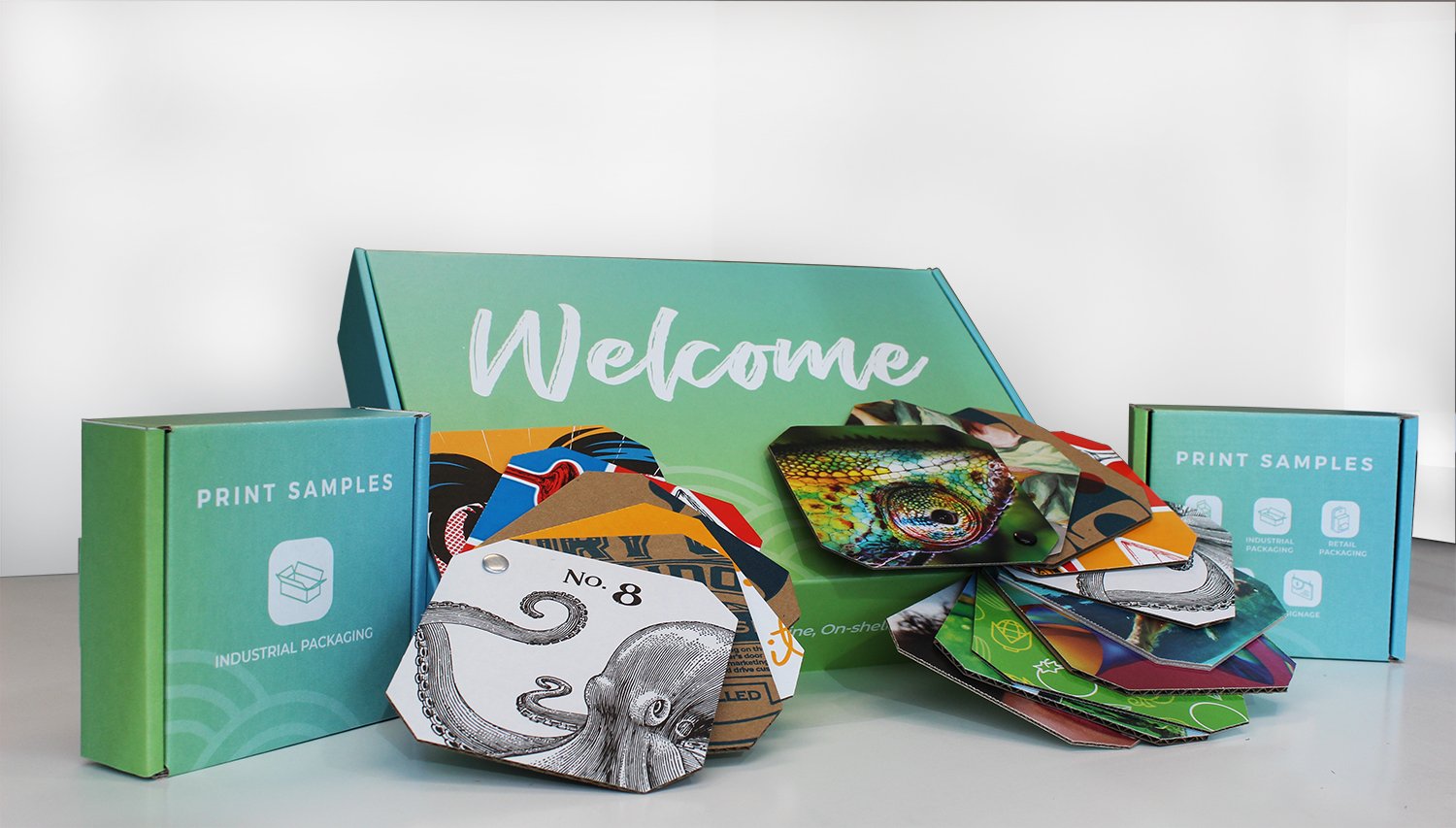Many hours, sweat and tears are spent on creating the right look and feel for products developed to support a brand – it doesn’t stop there. Your retail and industrial packaging are now an important part of your brand and many times the first impression your customer will have when they receive your product on their doorstep. Nowadays there are many different substrates and printing techniques available.
These techniques deliver a package that communicates with your customer as another advertising medium while ensuring that your product arrives in pristine condition. When creating branding and messaging on a screen, it’s hard to envision how the product will look in real life, or maybe you would like to see what opportunities are available. Bay Cities developed, designed and printed a custom kit to demonstrate the different printing processes and substrates to create corrugated packaging and different types of point-of-purchase (POP) displays.
Printing Types
Three types of printing for corrugated packaging and POP displays should satisfy most of your needs:
Lithographic
A print process that uses four or more colors to print a label that can then be laminated onto a corrugate sheet. This type of printing is best for highly detailed and photographic designs. Litho also allows for specialty coatings such as spot UV or spot gloss. These coatings accentuate specific areas, add depth to the art or can create a unique texture on the packaging or POP display.
Flexographic
Flexographic is an excellent option for industrial packaging or POP displays. While the 4-color printing process can be applied directly to a corrugate sheet, custom mixed spot colors can be created to match a brand color. Spot colors can create brighter, more vibrant results within a smaller range of colors. Graphics that feature a few colors or colors in the same range are best for this printing process. PMS colors, selected from the Pantone book, can be used as well.
Digital
An inkjet method printing directly onto the corrugate. This option achieves near Litho-quality without the need to create a label for lamination. Printing plates are not necessary as in the Litho process, so art can be customized and personalized on the fly for individually printed packaging or POP displays and can be applied throughout the entirety of a print run. This is an amazing resource for a brand focusing on (mass) customization and personalization. There is a spot gloss option available. Digital is great for e-commerce packaging, retail-ready packaging, subscription boxes, WOW trains and large pallet skirts. As there are no print plates used, this technique is good for samples, variable imaging and short and large (customized) runs.
Substrate Types
A variety of substrates are available to showcase your brand’s character and messaging. Each printing type looks different depending on the substrate used.
Kraft
This substrate gives the corrugated look most associated with brown boxes and is the best known. Industrial packaging is usually printed on Kraft. Kraft is also widely used for art that needs a natural-looking background. Popular for organic brands like food and beauty, this substrate is the tried and true of the corrugated industry.
#3 White
#3 White is a popular board used for corrugated packaging and POP displays that need a clean, white background to fill with art. Sometimes called mottled white, #3 is less white than #1, and used more frequently to avoid scuffing or marks on the corrugated box. Subscription boxes, retail packaging, mailers and shippers and press kits are commonly printed on this substrate.
Kemi
Kemi is a clay-coated, white corrugated substrate that has a glossy finish to it. This substrate is most widely used for WOW trains, POP displays, endcaps, floor displays, and pallet displays that require a gloss look from the Flexo, flood-coated printing. A direct print that wants to highlight the Flexographic capability and achieve a Litho quality is perfect for Kemi. When the art needs to shine, we utilize Kemi. Any packaging or display that features specialty coatings will be printed on Kemi.
Foam Core
Foam Core, even though not corrugated, is a thick board that serves as a bright backdrop for your art in applications which require photographic prints and brilliant full color.
All these substrates are available in different corrugate wall thickness or flute size that can affect the printability. Flute types also affect the structural integrity of your custom brown boxes or POP floor displays. In many cases you can leave that to the experts in structural design.
We’ll discuss more on the board types and flute sizes soon!


/BC_Logo2_White.png?width=300&height=83&name=BC_Logo2_White.png)